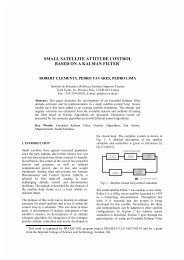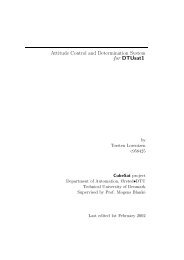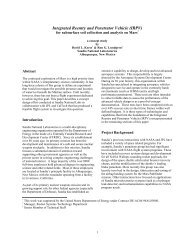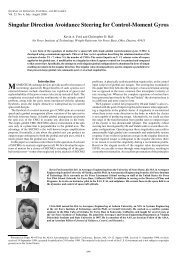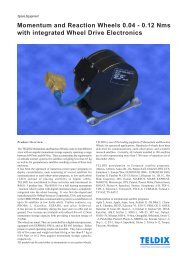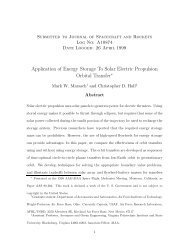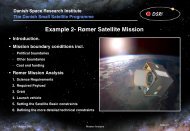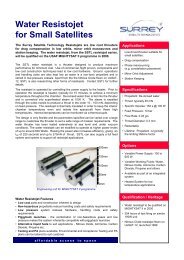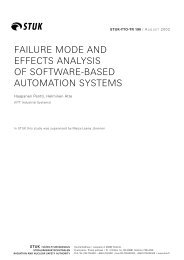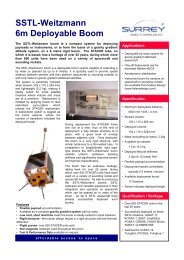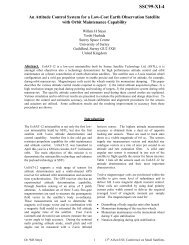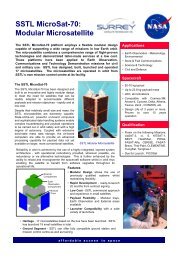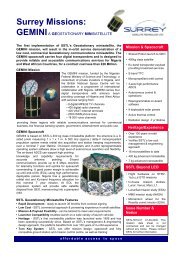Sea Launch User's Guide
Sea Launch User's Guide
Sea Launch User's Guide
Create successful ePaper yourself
Turn your PDF publications into a flip-book with our unique Google optimized e-Paper software.
6.1 Mass and Center of Gravity (CG) Limits<br />
Definitive compatibility<br />
requiring<br />
multiple verification<br />
activities<br />
Several verification activities must be done to demonstrate Zenit-3SL<br />
compatibility with a specific spacecraft having a given mass and CG.<br />
These include<br />
• Coupled loads analysis.<br />
• Strength and controllability analyses.<br />
• Critical clearance analyses to assess volumetric constraints.<br />
• Performance calculations for the specific mission.<br />
• Peaking load calculations for spacecraft having a nonuniform<br />
interface stiffness.<br />
More information on spacecraft mass is presented in section 3.3.<br />
Current Zenit-3SL<br />
structural capability<br />
The Zenit-3SL launch vehicle can structurally accommodate spacecraft<br />
with a wide range of mass and CG for each of the three spacecraft adapters<br />
currently offered by <strong>Sea</strong> <strong>Launch</strong>.<br />
Table 6-1 provides the expected spacecraft mass and CG limits for the<br />
Zenit-3SL using a standard spacecraft adapter when the lateral load factor<br />
on the spacecraft is 2.0 g or less and the load distribution at the spacecraft<br />
interface is ideal.<br />
Definitive compatibility of a spacecraft with the Zenit-3SL requires all<br />
verification activities outlined above. In particular, peaking load calculations<br />
must be performed when the load distribution at the spacecraft interface<br />
is not ideal.<br />
REV B D688-10009-1 6-3



